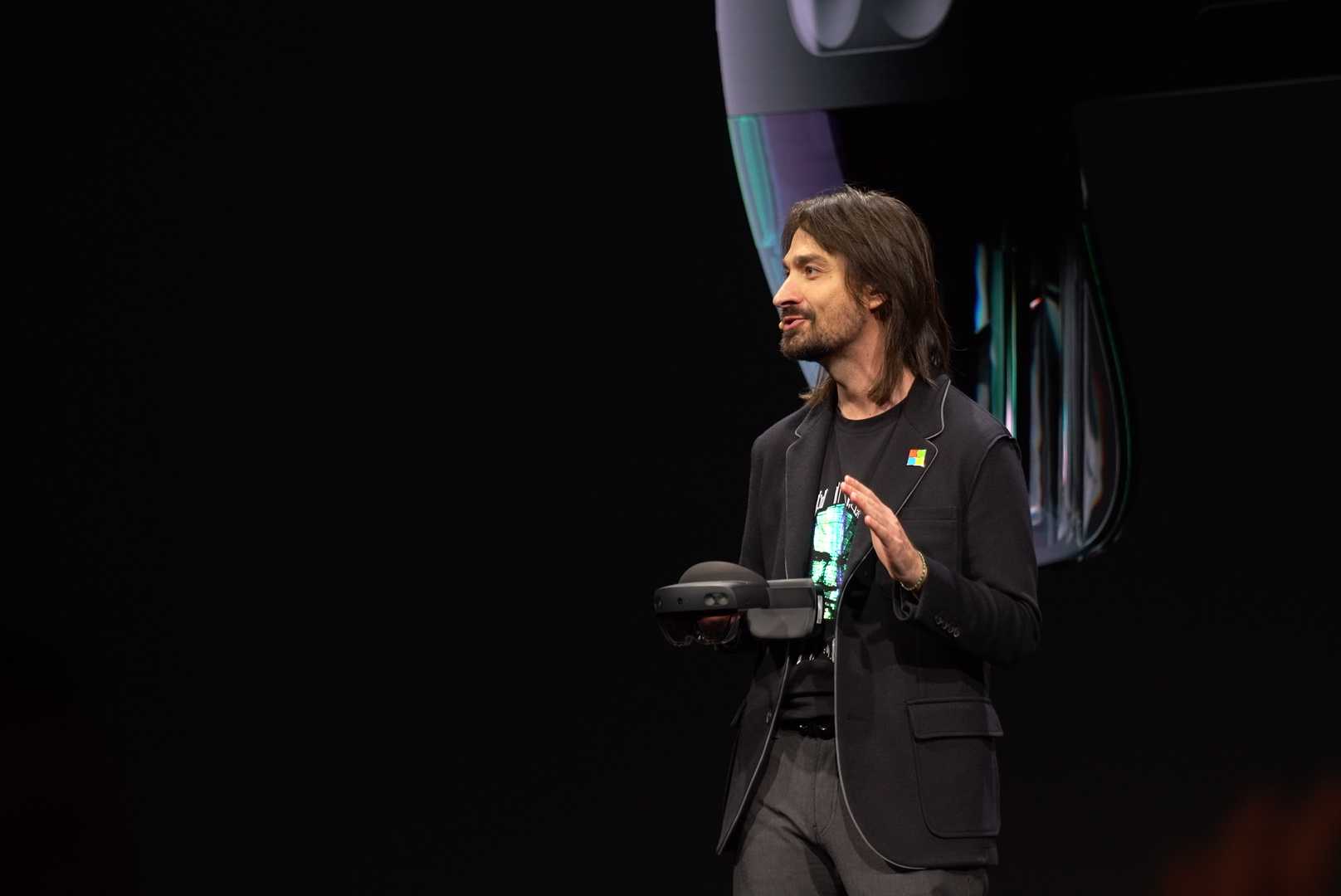'Holoportation' is now a reality thanks to Microsoft Mesh, Azure, and HoloLens 2
 Source: Microsoft
Source: Microsoft
What you need to know
- Microsoft Mesh is a new mixed reality platform that has been years in the making.
- Microsoft Mesh uses Azure, mixed reality, and 3D capture technology to beam a person's lifelike image into a virtual scene.
- Microsoft Technical Swain Alex Kipman demoed the tech live at Microsoft Ignite.
- James Cameron, Niantic, and Guy Laliberté of Cirque du Soleil are working with Microsoft on the tech.
Microsoft Mesh: 'Holoportation' is getting real
In 2022, Microsoft broke the ice on its new HoloLens mixed reality platform, often demoing potential features that could make it anytime. One of those features was 'holoportation', the ability to be in a shared space with someone else virtually. The concept seemed direct out of Star Expedition. Although just a rough demo, it was merely two years afterwards Microsoft showed advancements in the idea at Ignite 2022.
Today, holoportation becomes even more real as the Redmond software behemothic announces Microsoft Mesh – a new mixed-reality platform powered by its Azure cloud service. Similar its previous holoportation concepts, Microsoft Mesh relies on "3D capture technology to axle a lifelike image of a person into a virtual scene."
Microsoft Mesh is the consequence of years of Microsoft research and development in creating persistent holograms.
The proclamation came via a live demonstration of the platform at Microsoft Ignite delivered by Microsoft Technical Swain Alex Kipman in real-time along with its partners Lune Rouge (Guy Laliberté), Niantic (John Hanke), and OceanX OceanX (Ray Dalio).
On phase, Microsoft and its partners demoed how Microsoft Mesh can enable new abilities and remote collaboration. James Cameron, the famous Hollywood filmmaker, discussed Ray Dalio'southward OceanX non-turn a profit that "merges cutting border science with compelling storytelling" to support body of water teaching and awareness. Collaborating with Microsoft, OceanX is able "to create a Mesh-enabled holographic laboratory" on its research vessel, OceanXplorer. Scientists on the OceanXplorer ship will be able to gather – either in-person or virtually- from labs around the world to see 3D holograms of the areas they're exploring."
 Alive demo of Microsoft Mesh at Microsoft Ignite 2022. Source: Microsoft
Alive demo of Microsoft Mesh at Microsoft Ignite 2022. Source: Microsoft
Other demos from the CEO and founder of Niantic included a proof-of-concept around Pokémon Go that runs on HoloLens two. Additionally, Guy Laliberté, founder of Lune Rouge and Cirque du Soleil, spoke about how Microsoft Mesh helped his company bring to life a project called Hanai Earth that connects "live and digital entertainment experiences into unmarried events."
 Pokémon Go proof-of-concept using HoloLens 2 and Microsoft Mesh at Ignite 2022. Source: Niantic
Pokémon Go proof-of-concept using HoloLens 2 and Microsoft Mesh at Ignite 2022. Source: Niantic
Turning back to Microsoft's main mission of productivity, Mesh is likewise expected to play a significant role in digitizing future workspaces with the do good of Azure's enterprise-grade security and privacy features:
Microsoft Mesh will likewise enable geographically distributed teams to have more collaborative meetings, conduct virtual design sessions, assist others, acquire together and host virtual social meetups. People will initially be able to express themselves as avatars in these shared virtual experiences and over time utilise holoportation to project themselves every bit their most lifelike, photorealistic selves.
Architects and engineers could physically walk through a holographic model of a factory floor under construction, seeing how all the pieces of equipment fit together in iii dimensions, potentially avoiding plush mistakes.
Engineering or medical students learning about electric car engines or human anatomy could gather equally avatars around a holographic model and remove parts of the engine or skin dorsum muscles to meet what's underneath. Colleagues could merely get together and chat in a shared virtual space, or companies could utilize Microsoft Mesh-enabled apps to offering virtual all-hands meetings or trainings to employees around the world.
Of course, the future of actual holograms is not quite here yet, as the visitor noted people "will initially exist able to limited themselves every bit avatars" at first, and then, over time, "use holoportation to project themselves as their most lifelike, photorealistic selves."
Microsoft Mesh: Coming soon (and open up standards)
 AltspaceVR is getting a new Mesh experience for companies to hold virtual-reality meetings. Source: Microsoft
AltspaceVR is getting a new Mesh experience for companies to hold virtual-reality meetings. Source: Microsoft
Microsoft Mesh is not just some other concept. The new platform brings many of these new features – including "a full suite of AI-powered tools for avatars, session management, spatial rendering, synchronization across multiple users and holoportation" – in the coming months.
Although Microsoft's own HoloLens two mixed-reality headset is mainly featured with holoportation, the company noted the platform has "open standards," It volition work across many devices, including other virtual reality headsets, smartphones, tablets, and even PCs.
Additionally, Microsoft is announcing the availability of the new Microsoft Mesh app for HoloLens and a new Mesh-enabled AltspaceVR (which Microsoft caused in late 2022). AltspaceVR with Microsoft Mesh "will allow companies to hold meetings and work gatherings in virtual reality with enterprise-form security features including secure sign-ins, session management, and privacy compliance."
Microsoft is also letting developers create new applications for the platform and plans to integrate the applied science into Microsoft Teams and Dynamics 365.
Holographic computing

Microsoft HoloLens 2
HoloLens, but ameliorate
HoloLens 2 takes everything that made the original swell and turns information technology up to 11. With a new carbon-fiber body, extra padding, center tracking, and a wider field of view, the headset should have no problem finding success amid developers and get-go-line workers.
We may earn a commission for purchases using our links. Learn more than.
Source: https://www.windowscentral.com/microsoft-mesh-holoportation-announced
Posted by: kiddmembech.blogspot.com


0 Response to "'Holoportation' is now a reality thanks to Microsoft Mesh, Azure, and HoloLens 2"
Post a Comment